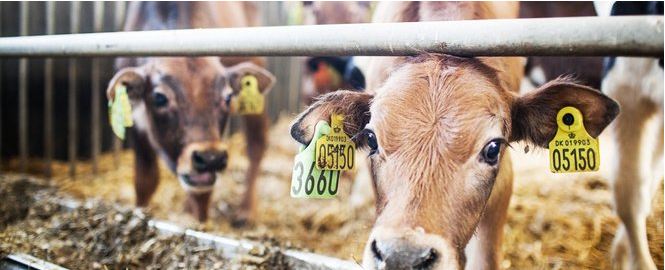



More than Welfare Benefits: Meeting the Cow's Needs in the Maternity Pen
Natural tendencies to seek isolation before calving could be provided for by a new maternity pen hoping to improve cow welfare as a result.Not only will the undisturbed cow calve easier but the labour and cost of calving will be reduced for the farmer, say researchers at Aarhus University.
Fewer cows suffering from production diseases and fewer veterinary costs; those are some of the expected effects of a new research project, which is to be launched in the autumn of 2014 at the Department of Animal Science at Aarhus University. In collaboration with Jyden Bur, the researchers aim to develop a concept including self-operated maternity pens, which will accommodate the cow's natural tendency to isolate from the herd prior to calving.
The idea is to develop a housing design, where the cow is able to withdraw from the herd during the early stage of calving, in order to calve alone in an undisturbed and clean maternity pen, where she can stay with her new-born during the first hours after calving , explains the project leader Margit Bak Jensen, who continues:
"The project investigates what a cow perceives as an optimal calving site with a sufficient level of isolation.
"Further, the project investigates the pre-requisites for the cow to be able to operate the maternity pen’s gate, which ensures that she remains alone within the pen. The concept will be developed based on this knowledge."
In order to ensure an undisturbed calving, and to prevent infections, New Danish law states that calving must take place in an individual maternity pen, and that the cow and calf must spent the first hours after calving together. It is however, difficult to predict the time of calving, and many cows are either moved too late, or calve in the group pen with other cows. This may result in poor animal welfare, due to prolonged calving and increased pain, as well as increased risk of dystocia, , metritis and calf mortality.
Positives from the Project: Self Closing Gate
- The concept has the potential to improve animal welfare and health, and to reduce expenses due to reduced milk production and veterinary treatment. Fewer cows with production diseases will also result in a lower environmental impact per unit milk produced. On top of that labour may be reduced by implementing our concept, estimates Margit Bak Jensen.
- The project will identify which features of a sheltered area that stimulate isolation seeking prior to calving. This will be investigated by housing pregnant close-up cows in experimental pens, where they can choose between various calving areas. Differently shaped pen walls enclose the different calving areas in order to determine which enclosure is the most attractive.
- Subsequently a self-closing gate will be developed and tested. A pre-requisite of the concept is that only one cow at a time may access the self-operated maternity pen, and that the cow and the calf can remain alone and undisturbed within it during the hours after the calving.
- Once the calving pen and gate have been designed and developed, the aim is to investigate how much experience with these individual maternity pens and their self-operated gate is a prerequisite for the cow’s isolation seeking prior to calving. Furthermore, it will be investigated at which stage the cow seeks isolation in relation to the time of calving, and whether all cows calve in the individual maternity pens.
- Finally, the project's partners will test the concept in a dairy herd. This test involves one group of cows calving in the new housing concept and a control group calving in traditional calving pens (at least 75 cows in each of the two systems). The effect on the occurrence of calving difficulties, production diseases, calf mortality and health as well as milk yield will be investigated. Furthermore, the level of labour in the two systems will be compared.



